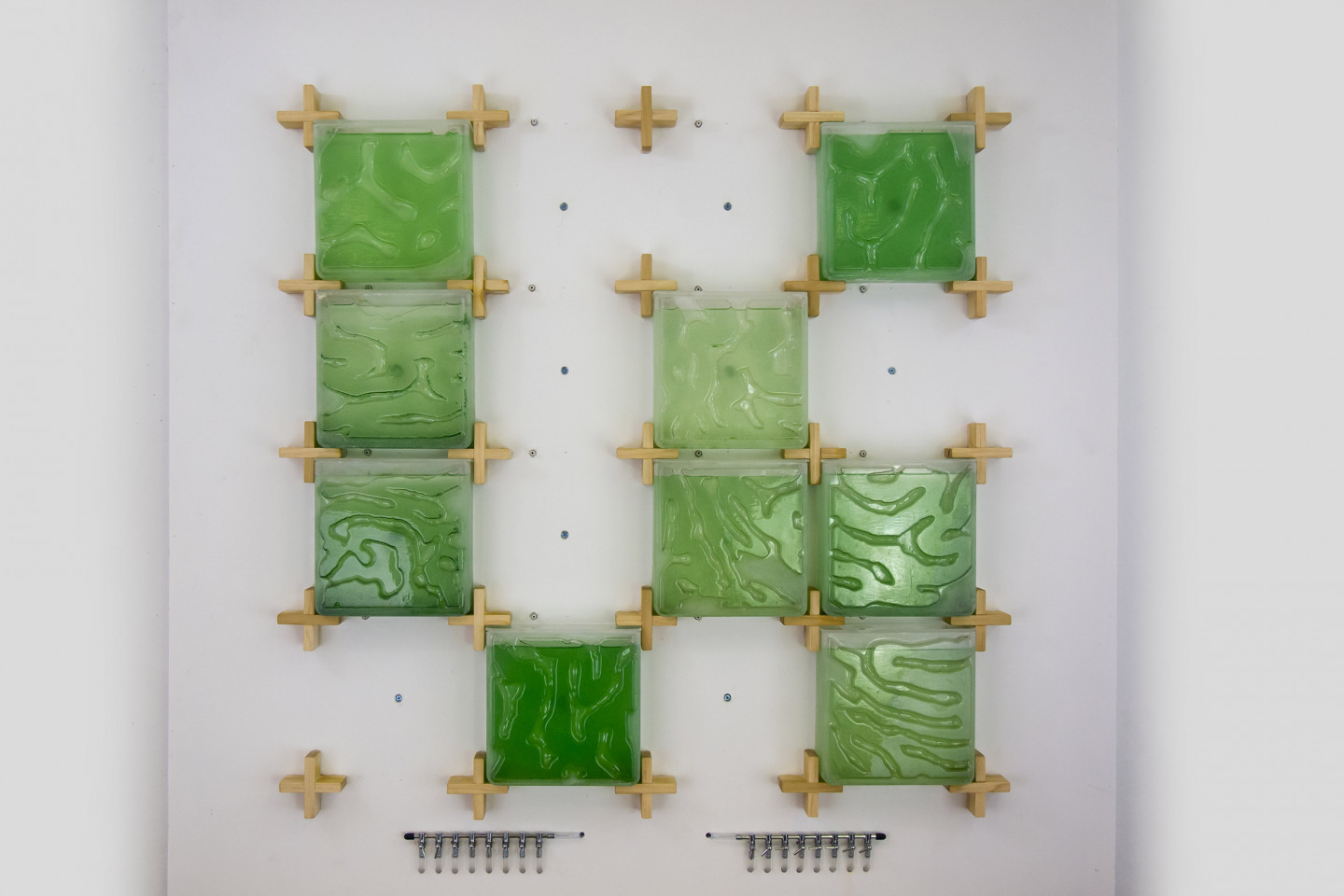Hyunseok An’s The Coral is an indoor micro-algae farm.
In 2012, EcoLogicStudio presented an algae installation at the Architectural Association.
The chandelier-like bright green structure, H.O.R.T.U.S, was displayed in the members area and illustrated how algae can benefit the surronding area by absorbing toxins and releasing oxygen.
Having a fast and efficient growth cycle, algae is one of the most efficient plants across the globe, and is continuing to play a role in the development of sustainable systems for food, fuel, textiles and cleaning the atmosphere.
Although algae is often associated with stagnancy and pond scum, in terms of food consumption, NASA deems algae as a beneficial dietary supplement on long-term space missions because of its rich, well-balanced nutritional content.
Aiming to encourage society to embrace algae, a designer from the Rhode Island School of Design has recently constructed an easy-to-use micro-algae farming kit. Hyunseok An’s The Coral — named after its coral-like design on the front — is an indoor micro-algae farm mounted on the wall which encourages people to use algae daily through home algae farming activities.
An’s design is a four-by-four grid wall frame containing around 2 grams of algae in each grid. The 16 cells in the micro-farm enable people to grow and eat algae each day because one cell has a biweekly cycle to replenish after harvesting.
The Coral allows people to have access to cheap and nutritional resources at home — a sustainable alternative for healthy diets. As it is designed to be used daily in home environments, An hopes that it could be an acceptable way of reconnecting with algae and bringing it into our everyday lives. The cells change colour from clear to dark shapes of green, making for an interesting indoor experience.
To view more about the project, click here.


